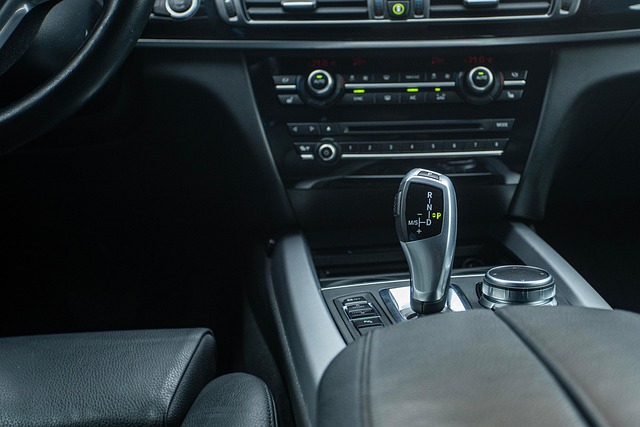Karachi’s Autonomous Vehicle Revolution: Testing, Challenges, & Future Safety
Karachi, Pakistan's vibrant metropolis, is at the forefront of a global revolution with the tes…….

Karachi, Pakistan's vibrant metropolis, is at the forefront of a global revolution with the testing of autonomous vehicles, aiming to transform urban mobility. This technology promises significant improvements in road safety and traffic congestion by leveraging advanced sensor tech, machine learning, and mapping systems. Despite challenges like dynamic street conditions and high density, successful implementation could make Karachi a global hub for AV innovation. Testing combines virtual simulations with real-world scenarios on public roads, bridging gaps between environments. To ensure public safety, Karachi needs strict regulations governing AV deployment, collaboration between regulators and industry stakeholders, and learning from global case studies to position itself as a leader in AV testing.
Karachi, Pakistan’s vibrant metropolis, is on the cusp of a transportation revolution with the advent of autonomous vehicles. This article explores the breakthroughs in testing these game-changing technologies within the unique urban landscape of Karachi. We delve into the challenges and considerations of navigating dense traffic, diverse weather conditions, and complex infrastructure. From advanced simulations to real-world trials, discover how innovative testing techniques are shaping the future of autonomous mobility, promising safer, more efficient travel for Karachi’s folk.
- The Rise of Autonomous Vehicles in Karachi: A New Era of Transportation
- Challenges and Considerations for Testing in an Urban Environment
- Innovative Testing Techniques: From Simulations to Real-World Scenarios
- Safety, Regulation, and the Future of Autonomous Mobility in Karachi
The Rise of Autonomous Vehicles in Karachi: A New Era of Transportation

Karachi, Pakistan’s vibrant metropolis, is witnessing a quiet revolution with the emergence and testing of autonomous vehicles on its bustling streets. This new era of transportation represents a significant shift in how people and goods move within the city. With advanced sensor technologies, machine learning algorithms, and robust mapping systems, these self-driving cars promise to enhance road safety, reduce traffic congestion, and improve overall mobility.
The rise of autonomous vehicles in Karachi is not just a technological advancement; it’s a response to the city’s unique challenges. Navigating through dense traffic and crowded urban landscapes has always been a complex task. Autonomous vehicles have the potential to streamline these issues by making informed decisions in real-time, ensuring smoother journeys and efficient route planning. As testing progresses, Karachi is set to become a hub for innovation, setting a precedent for other cities worldwide struggling with similar transportation problems.
Challenges and Considerations for Testing in an Urban Environment

Testing autonomous vehicles in urban environments presents unique challenges, especially in densely populated cities like Karachi. The dynamic nature of city streets, with their unpredictable pedestrian and vehicle movements, requires sophisticated sensor technologies to accurately perceive the surroundings. One significant consideration is the development of robust algorithms that can navigate complex intersections, manage traffic signals, and ensure safe interactions with cyclists and other vulnerable road users.
Additionally, urban testing demands meticulous planning to address legal, ethical, and safety concerns. This includes obtaining permits for closed-course simulations or coordinating with local authorities for on-road trials. Data privacy is another critical aspect, especially when dealing with sensitive information from various sensors. With Karachi’s diverse and bustling streetscape, ensuring the reliability and performance of autonomous systems under these conditions is a complex task, but it holds immense potential to shape the future of urban mobility.
Innovative Testing Techniques: From Simulations to Real-World Scenarios

In the pursuit of perfecting autonomous vehicles, testing has evolved from mere simulations to a blend of sophisticated virtual environments and real-world scenarios in cities like Karachi. Innovative techniques are pushing boundaries, allowing for more accurate assessments of self-driving cars’ capabilities. Advanced simulations now incorporate complex urban layouts, traffic patterns, and weather conditions specific to Karachi’s environment, ensuring vehicles are prepared for diverse challenges.
Real-world testing, once limited to controlled tracks, has expanded onto public roads in Karachi, offering invaluable data on vehicle performance under actual conditions. This approach not only exposes the vehicles to unpredictable human behavior but also lets researchers study their interaction with unfamiliar environments, bridge gaps in simulation data, and uncover potential issues that might be missed in virtual trials.
Safety, Regulation, and the Future of Autonomous Mobility in Karachi

In Karachi, as with many cities around the world, the future of autonomous mobility holds immense promise for transforming transportation and safety standards. However, realizing this potential requires addressing significant challenges related to safety and regulation. As autonomous vehicles (AVs) navigate city streets, ensuring passenger and pedestrian safety is paramount. Karachi’s dense urban landscape and varied weather conditions pose unique testing grounds for AV technology. Strict regulations are necessary to govern the deployment of AVs, establishing clear guidelines for testing, operation, and liability.
Regulators in Karachi must collaborate with industry stakeholders to create a framework that encourages innovation while prioritizing public safety. This includes defining performance standards, conducting comprehensive trials in diverse environments, and integrating advanced driver-assistance systems (ADAS) into city infrastructure. By learning from global case studies and adapting best practices, Karachi can position itself as a leader in autonomous vehicle testing, ensuring a safe and efficient future for its residents and visitors alike.
The future of transportation in Karachi is looking increasingly autonomous. As these vehicles navigate the city’s bustling streets, testing breakthroughs are ensuring safety and paving the way for a new era of mobility. By combining advanced simulations with real-world trials, developers are overcoming urban challenges and refining algorithms to make autonomous vehicles a reliable and efficient reality for Karachi’s residents. With continued innovation and regulatory support, Karachi could become a leader in autonomous vehicle adoption, reshaping its transportation landscape and setting an example for cities worldwide.







